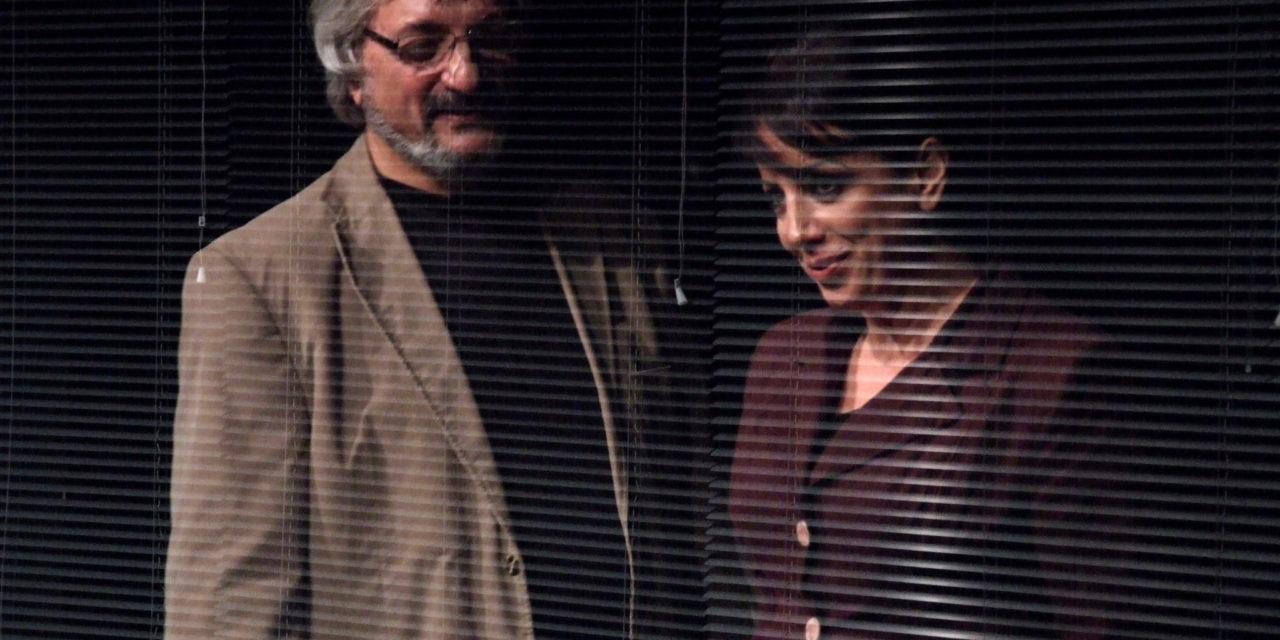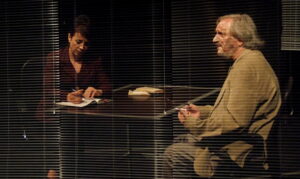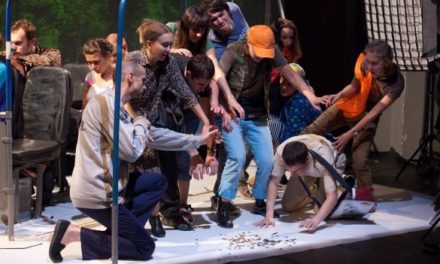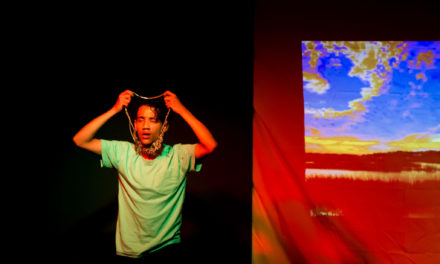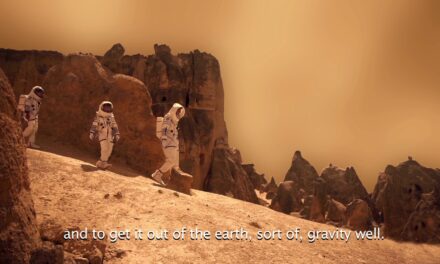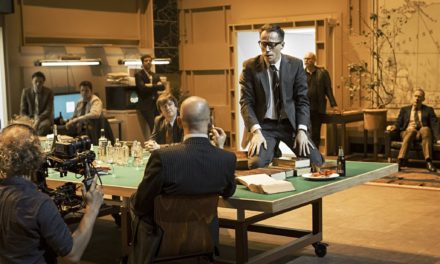The late Israeli critic, Dr. Shosh Avigal, wrote in 1996 that: “It is private life that is considered shocking fodder for theatre; the political is the norm.” And yet, in the young Israeli drama and theatre there are hardly any traces for the self-scourging attitude of the docudramatic works of the 1970s to the 1990s by Joshua Sobol, Moti Lerner, Hanoch Levin, Hillel Mittelpunkt and others who dealt with the bewitched senseless circle of murder and revenge in the Middle-East, problematized the moral vindication of the occupation and the reluctance to negotiate with the Palestinians, the humiliating and de-humanizing attitude towards the Arabs, as well as the racist ideology underlying the settlement Weltanschauung.
This article scrutinizes developments in the field of political drama, theatre and performance in Israel between 2011-2014. The next article will focus on some of the more significant phenomena in the last two seasons.
The younger generation of Israeli playwrights and theatre-makers over the last decade until quite recently attended to universal individual problems or coped with materialistic questions affiliated with the socio-economic protest that erupted in Israel some four years ago, rather than to the “routine” political issues. Exceptions in the old vein are few. They include dramatists such as the outstanding Gilad Evron, who in his powerful metaphoric allegory Ulysses on Bottles (exquisitely directed in 2011 by Ofira Henig at the Haifa Theatre) that sarcastically alludes to Sobol’s Ghetto, tells the story of the Palestinian literature teacher who risks his life by trying to smuggle into the beleaguered Gaza Russian literature which for him symbolizes the vital role of culture in the survival of mankind.
Another exceptional test case is the highly successful play The Return to Haifa (The Cameri Theatre of Tel Aviv, 2008; 2012) by the journalist, dramatist and political activist Boaz Gaon. The play is ironically based on a novella by Ghassan Kanafani, the spokesman of the PLO (Palestinian Liberation Organisation) killed by the Israeli Mossad. The story: Shortly after the end of the Six Day War the Palestinian couple, Said and Safiyeh, find out that their ancestral villa in the bi-national Israeli city of Haifa, from which they had had to flee during the Jewish-Arab war of 1948 (defined by the Israelis as their Independence War, and by the Palestinians as their Nakba, their catastrophe) that not only their “home”, which stands for their entire homeland, but also their first-born baby boy, Khaldun, whom they had left behind, has been adopted by a Jewish couple of Holocaust survivors, who have raised the child as an Israeli boy, re-named Dov, who – oblivious of his origins – became an Israeli combat fighter against his own blood brothers. The whole complexity of the Middle-Eastern tragedy of the victim turning victimizer is incorporated in this Brechtian Caucasian Chalk Circle identity metaphor (to whom does the boy, i. e. the land, belong?) The impact of this tragedy was doubly intensified since not only in the fictitious plot, but also on stage, the Arab parents were embodied by two Palestinian actors (Norman Issa and Mira Awad), a quite paradoxical and common phenomenon on Israeli stages, almost the only places in the country in which you may find true co-existence and collaboration between Jews and Arabs.
The younger generation of Israeli theatre-makers was born into a country which de jure, even if not de facto, has annexed the West Bank and ensured its ongoing domination of the Gaza stripe although it pulled out of it. They don’t know any other reality. Hence they are less vehement than the former and older dramatists generation in denouncing the almost 50 years old occupation, and more engaged in attacking the devastating moral effects of this abnormal situation on their daily life. Apart from their all belonging to the political left wing, there is no “movement” or single trend that unites them, but there are common threads.
The formally innovative devising young group of Ruth Kanner, a leading alternative ensemble in Israel, uses newly processed traditional techniques of storytelling, choral and movement theatre to enkindle the suppressed guilt-memory of the Israeli audience. In their project Dionysus in the Centre the group members employ a highly suggestive and imagistic kinaesthetic body language, and create a purely phenomenological site-specific space, to evoke the denied mnemonic archaeology of the largest shopping mall in Tel Aviv, the Dizengoff Centre, built on the ruined site of a Jewish neighbourhood that was established on a destroyed vineyard belonging to a dispossessed Palestinian family from Jaffa, a history that we prefer to forget.
Representatives of a messed up generation
In her own unique workshop methods, based on authentic life-stories , the daring dramatist/director/ensemble leader Yael Ronen – before becoming an international celebrity, established in the Maxim Gorki Theatre in Berlin – attempted to understand “what is the accumulative meaning of a generation born into and raised in a reality of occupation?” Ronen’s first professional cabaret-like project, The Guide to the Good Life (2004), was a neo-epic collage of scenes from the lives of a group of young people, representatives of a fucked-up generation as the Israeli pop star Aviv Geffen described it: An ego-centric media star, who sees no problem in having sex while “reporting” invented gory details from the far away scene of a terrorist action; two soldiers, who stage a simulated terrorist maltreatment of a guy that they have run over, and cause a whole Palestinian village to pay the price; a woman chooses a pervert and demeaning tactic to avenge herself on her husband and her painting-model who tempted him, and so on. Not only God, but also Satan resides in details: The violence exerted in the occupied territories infiltrated into the psyche and civilian lives of these young people, and utterly depraved and deformed them, rendering them morally repulsive. And as the lesson of the next chapter of Ronen’s Lehrstück saga, Plonter, teaches us, this happened not only to the occupiers, but also to the occupied.
The extreme complexity, perplexity, and interchangeability of Jewish-Palestinian identity and conflict experience another twist of the screw in Dogs by Ido Bornstein (b. 1970). Bornstein resorted to the oldest trick in the book – the-play-within-the-play tactic – in order to show that – despite Schopenhauer – when political and national aspirations are concerned, even when there is a Will, there is not necessarily a Way. A young director does auditions for Arabs and Jews for a bi-national production intended to promote peace and understanding. In the rehearsal room gather five Jewish and Arab men with no theatrical training. The Jewish guard Nisim; Rabia, an Arab guy handcuffed by Nisim while trying to cross security without ID (and then staying handcuffed to spite the Israelis); Abed the handyman, Rabia’s protective brother; Shahar the Jewish biker, who out of existential anxiety never takes off his motorcycle helmet; and his brother Gili, a naive gay director, who believes in the power of theatre to change the world and starts rehearsals for his version of Romeo and Juliet about the Palestinian ‘Rami’ who falls in love with the Jewish ‘Julie.’ However, with the growing tension between the Israelis and the Palestinians, and with no Julie to save the day, the stage becomes a single battlefield.
The same excellent Fringe Theatre, “Tmuna,” in which Dogs was performed, staged also A Leap by the young writer Ella Moshkovitz-Weiss – an apparently blue-eyed and optimistic psychological-political well-made thriller, based on Dostoyevsky’s Crime and Punishment, that proves however, through role-reversal, the impossibility of genuine intimacy between Jews and Palestinians. The Jewish Professor Yehoshafat Ben-Ari, a highly renowned, charismatic, manipulative, and sly psychiatrist, whose face has been deformed in a Palestinian suicide bombing, has been arrested as a suspect in the murder attempt of his girlfriend. He is confronted with a top, brilliant female Arab investigator, Idi Salam, Both are conducting a fierce, unflinching battle of sexes, national identities, power and brains. Little by little, the parts are upturned. The interrogated sacrifices himself for the interrogator’s career, and admits a crime that he might not have performed. The interrogator is bewitched by the interrogated and destroys the evidence. This could have turned into a love affair, but blood is thicker than water, and the “other” still remains the other.
One of the boldest and most versatile auteurs among the young Israeli artists, whose works are consecutively performed at the Tmuna Theatre since 2006, is Eyal Weiser. He is a conceptual writer and director that in a series of blatant, absurd, non-PC monologs and songs attacks the violent streak, the subdued cruelty, the humiliation impulse and xenophobic tendencies under the pretext of the (again and again) Holocaust syndrome, as well the complexes and identity crisis of the young Israeli generation. One of his projects in the last four years was especially notable: In Mein Jerusalem [the German in the original title] – a performance by Sabine Sauber – a solo show of the actress Michal Weinberg aided by PowerPoint images, documentary excerpts and video artworks – Weiser depicts the apparently authentic yet entirely fictitious autobiography of a Leipzig-born (1970) photographer and conceptual artists, a Western Jedefrau [Everywoman],whose virtual story and search after a “true” experience blends with the most important stations of world history in the last twenty years (including a short Israeli episode), and raises doubts about the meaning of national identity, ethnic and social belonging in the postmodern, simulacric “Reality” raison d’être of today.
Another attempt to relativize the meaning of communal identity and its dangerous political derivatives is performed by a kind of a neo-dadaist group called Public Movement that tries to change the public sphere and the routinized fascistoid modes of thinking by ridiculing “sacred” national rituals and ceremonies, and profaning their symbolic value through their precise, yet decontextualized emulation.
The same problems, but less scepsis
The last examples have shown that instead of resorting to the futile option of dealing with Israeli-Palestinian problem in a direct, political, semi-documentary manner, the younger generation prefers to “detach the evidence,” displace it to the cultural and metaphoric realm and thereby sublimate it. At the National Theatre Habima the young director Shai Pitovsky and dramaturg Shahar Pinkas, in the devised production of A New Country with the youngsters group of Habima, “transferred” the reference to this topic to another analogical burning issue: The attitude of the Israeli society to the African Genocide survivors and labour-seeking refugees that infiltrate into Israel and swamp it as in many European countries.
An entirely different approach could be discerned in the storytelling production of Both Upon a Time by the Israeli Herzliya Ensemble, directed by Ofira Henig. In this enchanting show, a collective group of Jewish and Arab actors presented folktales originating in the popular wisdom of various Middle Eastern cultures. The stories, engaged mainly with the intricate relations between the sexes, put the Arab and the Jewish cultures on equal footing, as they converge into a kaleidoscope of variable manifestations of basic human truths that emanate from the simple, childlike, naïve and yet sophisticated collective mind of the entire peoples in the region. The show proved that once you dig up the cultural roots of a society, you will find that we are all basically one and the same. It seems that the remedy for all the troubles in the region lies in the recreation and joint enactment by Jews and Arabs of the popular myth and lore. Had it only been that simple…
And what about the Iranian nuclear bomb, the most serious threat ever for the existence of Israel (at least, according to Israel’s controversial Prime Minister Benjamin Netanyahu) despite the agreements reached in 2015 by the superpowers?… Doesn’t the young Israeli theatre relate to it?! The answer is – no, the rates of rent and mortgage of flats for young couples is a much more pressing problem. Ah yes, there was one production, back in 2012, that dimly alluded to Iran, but only in the spectator’s mind: Fima, an adaptation done by the 90 years old director Nola Chilton and the very young dramaturg Asaf Ofek to the novel The Third Condition by Amos Oz. It presented the allegoric figure of Fima, a small, barren clerk, who pesters the life of everybody around him with his extreme existential anxieties. But then, the novel is twenty-something years old, and Amoz Oz refused to define the Iranian threat as unique: “Almost nothing has changed. The same problems that worried Fima then still worry me today, and even more than in those days. … The problem is that today there is less scepticism and more indifference”.
This post was written by the author in their personal capacity.The opinions expressed in this article are the author’s own and do not reflect the view of The Theatre Times, their staff or collaborators.
This post was written by Gad Kaynar-Kissinger.
The views expressed here belong to the author and do not necessarily reflect our views and opinions.

